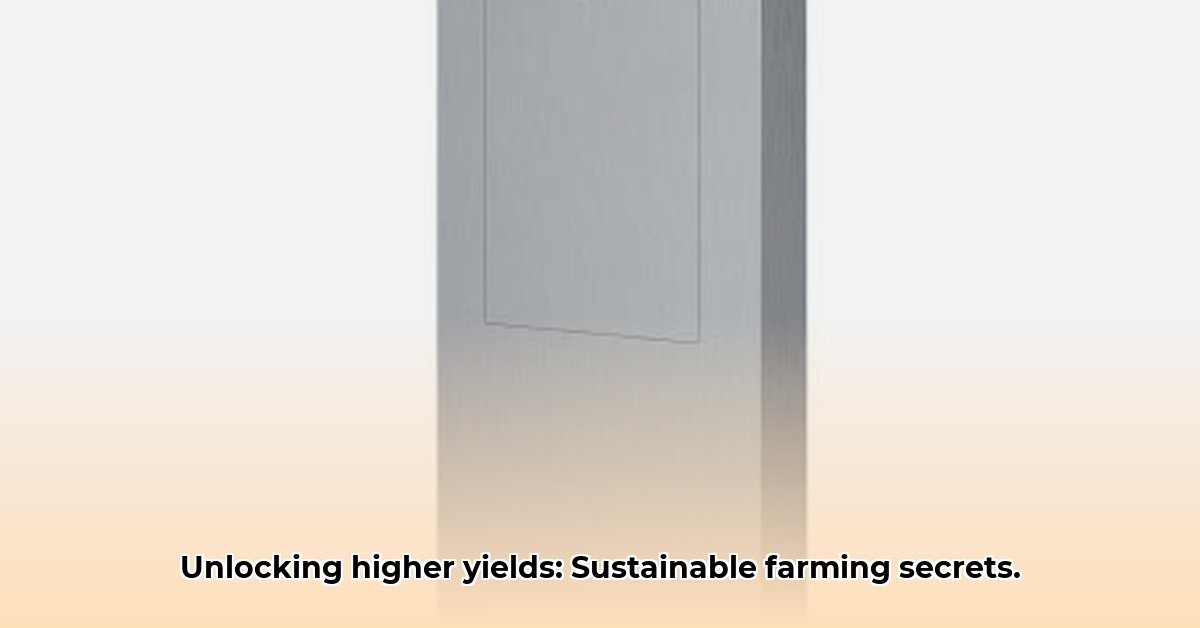
Stalknap's Innovative Approach to Sustainable Agriculture
Sustainable farming practices are no longer optional; they're essential for the future of food security and environmental stewardship. Stalknap, a comprehensive system designed to enhance farm efficiency and sustainability, directly addresses critical challenges facing modern agriculture. It offers a holistic approach, integrating several key elements to optimize resource use and minimise environmental impact. How does Stalknap achieve this? Let's delve into the details.
Core Components of the Stalknap System
Stalknap's innovative approach is built upon several key pillars:
Durable Materials: The system leverages the exceptional properties of stainless steel, known for its corrosion resistance and longevity, reducing equipment replacement needs and promoting long-term cost savings. This translates directly to reduced environmental impact by minimizing the need for resource extraction and manufacturing associated with frequent replacements.
Efficient Biogas Production: A central element of Stalknap is its ability to enhance biogas production from agricultural waste, primarily animal manure. This process converts waste into a valuable energy source, reducing greenhouse gas emissions and offering a potential revenue stream for farmers. Is this a cost-effective strategy compared to traditional manure management methods? Further research and analyses will illuminate the broader economic implications of this approach.
Optimised Water Management: Stalknap’s design incorporates strategies for responsible water resource management. By optimising irrigation and reducing water waste, the system contributes to improved water use efficiency, a crucial factor in sustainable agricultural practices, particularly in water-stressed regions. What specific technologies are employed to achieve higher water use efficiency? This requires further clarification.
Precision Farming Technologies: By integrating data-driven methodologies such as sensors and advanced analytics, Stalknap enables precision farming techniques. This approach allows for optimising resource allocation—fertilisers, irrigation, and pest control—resulting in improved yield and reduced environmental impact, leading to sustainable intensification of agricultural production.
Sustainable Supply Chain: Stalknap likely implements sustainability across its entire supply chain, from sourcing materials to packaging and transportation, reducing the system's overall carbon footprint. This commitment to environmentally sound operations extends beyond the farm itself, reflecting a broader commitment to sustainable practices throughout the entire product lifecycle.
Assessing the Potential and Challenges of Stalknap
The potential benefits of Stalknap are significant, promising a more sustainable and profitable future for farmers:
Environmental Benefits: Reduced waste, improved resource efficiency, and lower greenhouse gas emissions directly contribute to environmental sustainability. This alignment with global environmental goals positions Stalknap favourably within the evolving landscape of sustainable agriculture.
Enhanced Efficiency: Streamlined processes lead to increased yields, potentially lower labour costs, and improved overall farm productivity. Quantitative data on yield improvements and labour cost reductions would strengthen the evidence base for these claims.
Long-Term Economic Advantages: Durable equipment and responsible resource use translate into substantial long-term cost savings. This economic viability is crucial for widespread adoption of sustainable farming practices.
However, challenges remain:
High Initial Investment: The upfront cost of implementing Stalknap, particularly with stainless steel components, can be a significant barrier to entry for some farmers. Financial models demonstrating the return on investment (ROI) over time would be valuable in addressing this concern.
Market Competition: Stalknap will need to compete with existing technologies and solutions, requiring a strong marketing strategy and demonstration of its superior value proposition. A comparative analysis highlighting Stalknap's advantages over competitors would build investor and farmer confidence.
Regulatory Compliance: Navigating diverse local and national environmental regulations will involve careful planning and compliance efforts. A clear understanding of the regulatory landscape and Stalknap’s capacity to meet these requirements is vital.
Technology Adoption: Farmers might require training and support to effectively utilise the new technologies incorporated into the Stalknap system. This necessitates a robust training and support program.
Data Security and Privacy: If the system relies on data collection and analytics, robust data security measures must be in place to protect farmer data privacy.
Lifecycle Cost Comparison: Stainless Steel vs. Concrete Biogas Digesters
The choice between stainless steel and concrete for biogas digesters depends on various factors: budget, timeline, location, and long-term maintenance. While concrete often has lower upfront costs, stainless steel offers superior durability and faster construction times. Let's examine the key aspects of this comparison.
Initial Investment and Long-Term Costs
Concrete digesters typically present lower initial investment costs, especially for smaller projects. However, their susceptibility to cracking and chemical degradation necessitates higher maintenance expenses over time. Stainless steel, conversely, boasts higher initial costs but significantly lower long-term maintenance, owing to its durability and resistance to corrosion. The Lipp Verinox system, for example, showcases a design minimising build-up, thereby simplifying cleaning and maintenance.
Construction Timelines
Steel digesters, particularly modular designs like the Lipp system, often boast significantly faster construction times than concrete alternatives, enabling quicker deployment and return on investment.
Beyond Cost: Factors to Consider
Site conditions, seismic activity, and labour availability are also critical considerations. Concrete may be optimal in locations with stable foundations, while steel's resilience proves advantageous in seismically active areas.
Actionable Steps for Decision-Making
- Comprehensive Lifecycle Cost Analysis: Conduct a thorough cost analysis encompassing initial investment, construction time, maintenance costs, and projected lifespan for both materials.
- Detailed Site Assessment: Carefully assess site conditions, including soil stability, seismic activity, accessibility, and climate, to determine material suitability.
- Material Selection Based on Needs: Evaluate the strengths and weaknesses of concrete and stainless steel options (including GFS and Lipp Verinox) to find the best fit for your specific needs.
- Regulatory Compliance: Ensure your chosen design and materials fully comply with all relevant building codes, environmental regulations, and safety standards.
- Professional Expert Consultation: Seek guidance from experienced engineers and contractors specialised in biogas digester construction.
Dr. Anya Sharma, Agricultural Engineering Department, Stellenbosch University, highlights the importance of long-term planning in sustainable agriculture: "Investing in durable, high-quality infrastructure like stainless steel biogas digesters is a long-term investment in the sustainability and profitability of your farm."